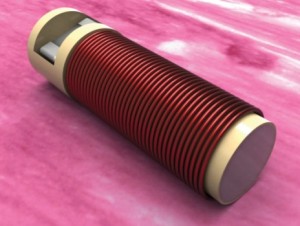The fight against cancer is one of those battles that science can not win in their entirety, that although there are several methods to combat it, to predict its occurrence and non-invasive treatment are still pending issues. Meanwhile, die each year about eight million people in the world due to some form of cancer.
Because of this, researchers have devised various treatments based on the use of chemotherapy and radiation, very aggressive methods for the human body, but to this day are the only proven way to eliminate cancerous tumors. An important part of this knows the efficiency of treatment, and this is where MIT is an important project that could lead to the use and proper choice of better cancer treatment.
The key is to know the efficiency of treatment immediately
Today, the only way we have to know whether a treatment is working is based on MRI to determine the size of the tumor, or by pathological examination of tissue obtained by biopsy, the latter being the most risky and invasive. But these methods just give us data how tumor reacted to the treatment, this month after having booted into it, with all the risks that this entails, since if no favorable response needs to change treatment.
Now researchers from the department of Koch Institute for Integrative Cancer Research at MIT have developed a small biochemical sensor that is implanted in the tumor or cancerous tissue during the first biopsy. The sensor will be able to send information about the tumor in real time to an external device, which will reveal immediately the response to treatment in order to continue or adjust it if necessary.
This would significantly increase the response time, plus you do not need biopsy or MRI, the readings would be carried out in minutes and the results would be in maximum one hour.
Michael Cima, engineering professor at the department of materials science and engineering at MIT Koch Institute, and who oversaw the development of the sensor, said:
“We wanted to make a device that would give us a chemical signal of what is happening in the tumor, rather than waiting months to see if the tumor is shrinking, with this sensor could get an early read to see if it is moving in right direction”.
This sensor is able to provide information on the levels of pH and oxygen dissolved in the tissue with cancer, this will help doctors adjust the appropriate dose of radiation, as tumors grow under conditions of low oxygen (hypoxia), so therefore, if the tumor has more hypoxia, you need more radiation.
The sensor is covered by a biocompatible plastic and its size is small enough to fit in the biopsy needle. Inside it’s have 10 microliters of chemical contrast agents, the same as those used in MRI, as well as a coil for the reader and a second coil to sensor, the latter will be responsible for operating the transfer of information to the external reader through mutual inductance.

















